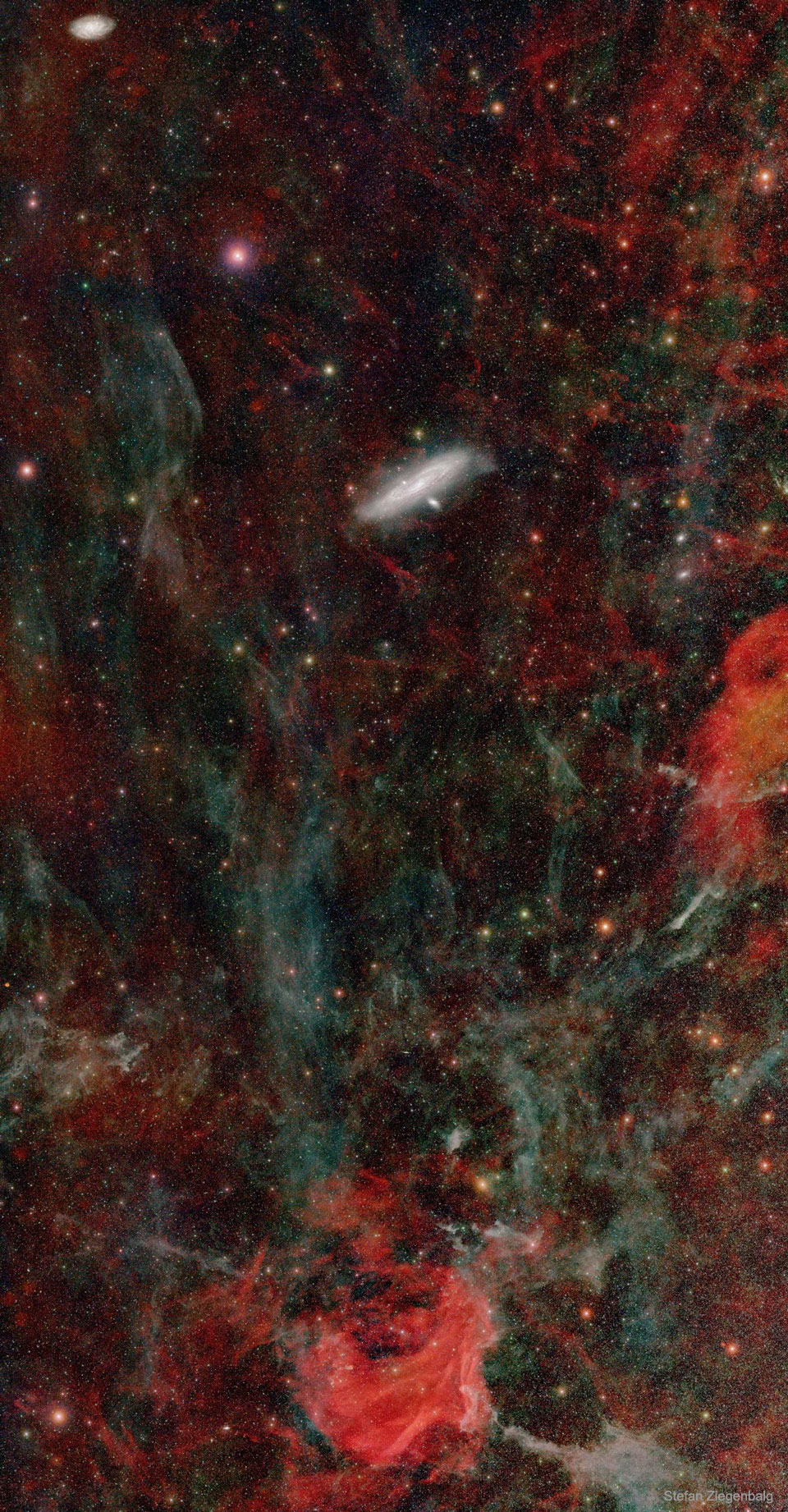dv said:
The local group of galaxies contains at least 80 galaxies. The two largest are our own (the Milky Way galaxy), and the Andromeda galaxy, some 2.5 million light years away. These two largely define the shape of the local group as a lopsided dumbbell, with most of the smaller galaxies acting as satellites if the two major ones. MW and Andromeda are both spiral galaxies.
Andromeda is a 3rd magnitude object and a fairly easy native eye object even in moderately dark skies.
There is a third large spiral galaxy: Triangulum. It’s also the third largest galaxy in the local group, by quite a margin.
As a somewhat diffuse 5th magnitude object, it is visible to a person with 20/20 vision under excellent viewing conditions, though I myself have never spotted it. At a distance of 2.9 million light years, it is the most distant object that can be seen with the naked eye.
The triangulum galaxy made it onto today’s apod image. At top left. The star Mirach occurs half way between Triangulum and Andromeda. The nebula SH2-126 is at bottom centre.
https://apod.nasa.gov/apod/ap210908.html

What surrounds the Andromeda galaxy? Out in space, Andromeda (M31) is closely surrounded by several small satellite galaxies, and further out it is part of the Local Group of Galaxies — of which our Milky Way galaxy is also a member. On the sky, however, gas clouds local to our Milky Way appear to surround M31 — not unlike how water clouds in Earth’s atmosphere may appear to encompass our Moon. The gas clouds toward Andromeda, however, are usually too faint to see. Enter the featured 45-degree long image — one of the deeper images yet taken of the broader Andromeda region. This image, sensitive to light specifically emitted by hydrogen gas, shows these faint and unfamiliar clouds in tremendous detail. But the image captures more. At the image top is the Triangulum galaxy (M33), the third largest galaxy in the Local Group and the furthest object that can be seen with the unaided eye. Below M33 is the bright Milky-Way star Mirach. The image is the digital accumulation of several long exposures taken from 2018 to 2021 from Pulsnitz, Germany.

